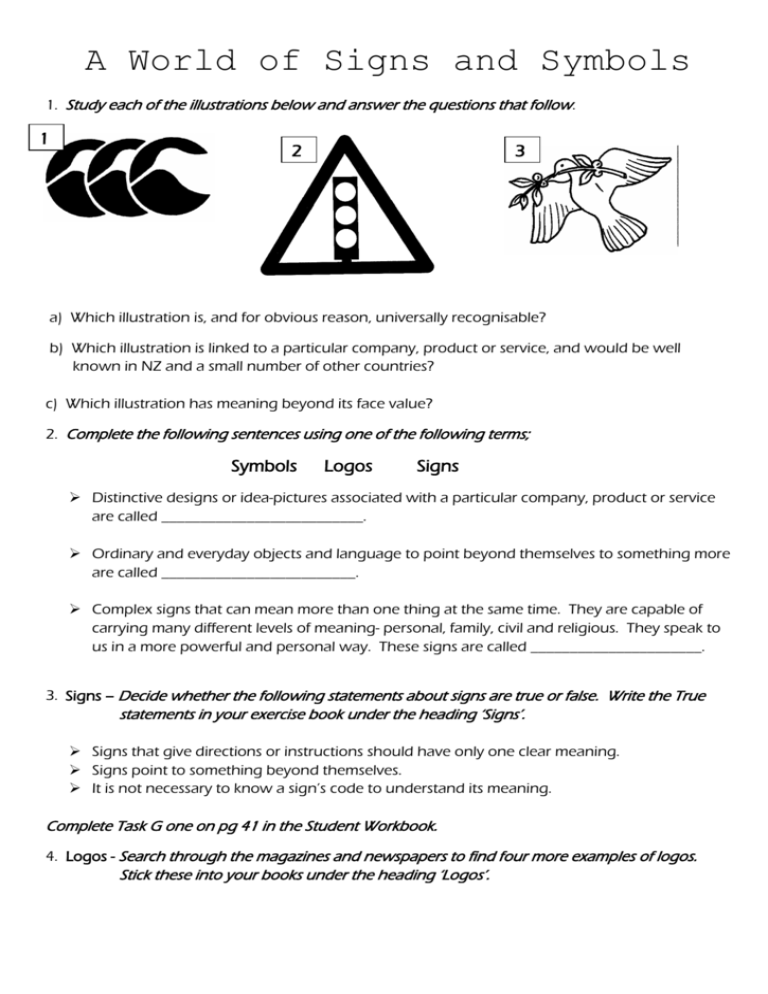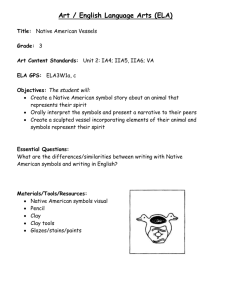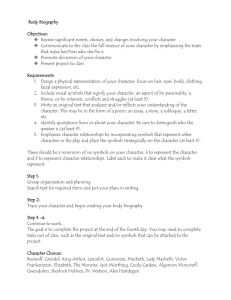A World of Signs and Symbols.
advertisement

A World of Signs and Symbols 1. Study each of the illustrations below and answer the questions that follow. 1 2 3 a) Which illustration is, and for obvious reason, universally recognisable? b) Which illustration is linked to a particular company, product or service, and would be well known in NZ and a small number of other countries? c) Which illustration has meaning beyond its face value? 2. Complete the following sentences using one of the following terms; Symbols Logos Signs Distinctive designs or idea-pictures associated with a particular company, product or service are called __________________________. Ordinary and everyday objects and language to point beyond themselves to something more are called _________________________. Complex signs that can mean more than one thing at the same time. They are capable of carrying many different levels of meaning- personal, family, civil and religious. They speak to us in a more powerful and personal way. These signs are called ______________________. 3. Signs – Decide whether the following statements about signs are true or false. Write the True statements in your exercise book under the heading ‘Signs’. Signs that give directions or instructions should have only one clear meaning. Signs point to something beyond themselves. It is not necessary to know a sign’s code to understand its meaning. Complete Task G one on pg 41 in the Student Workbook. 4. Logos - Search through the magazines and newspapers to find four more examples of logos. Stick these into your books under the heading ‘Logos’. 5. Copy the following into your workbooks. Symbols – Symbols often involve our feelings. Their meanings can differ depending on our personal experience and our culture. Poets, musicians and writers often use symbolic language in their poems, song lyrics and novels to give deeper meaning to what they are trying to communicate. Three characteristics make symbols richer than simpler types of signs: 1. Symbols operate on many levels – they cannot be reduced to one simple meaning. 2. What symbols stand for cannot be separated from what they are. 3. Symbols evoke more than just an intellectual response from us. Decide whether the following statements about symbols are true or false. Write the True statements in your exercise book under the heading ‘Symbols’. Symbols point to something beyond themselves. Symbols are a special type of sign that can have more than one meaning. Symbols can be fully explained. We can communicate with symbols without using words. Symbols can express feelings well. Personal experience and culture give meaning to symbols. Symbols do not occur in daily life. The human mind has the ability to make symbols. What do the following symbols stand for? Suggest as many meanings as you can for each of them. 2 1 Create your own symbol to express two of the following emotions or ideas. Be prepared to share them with the class. Community contentment fear compassion frustration Excitement loneliness hope anger courage Determination openness






